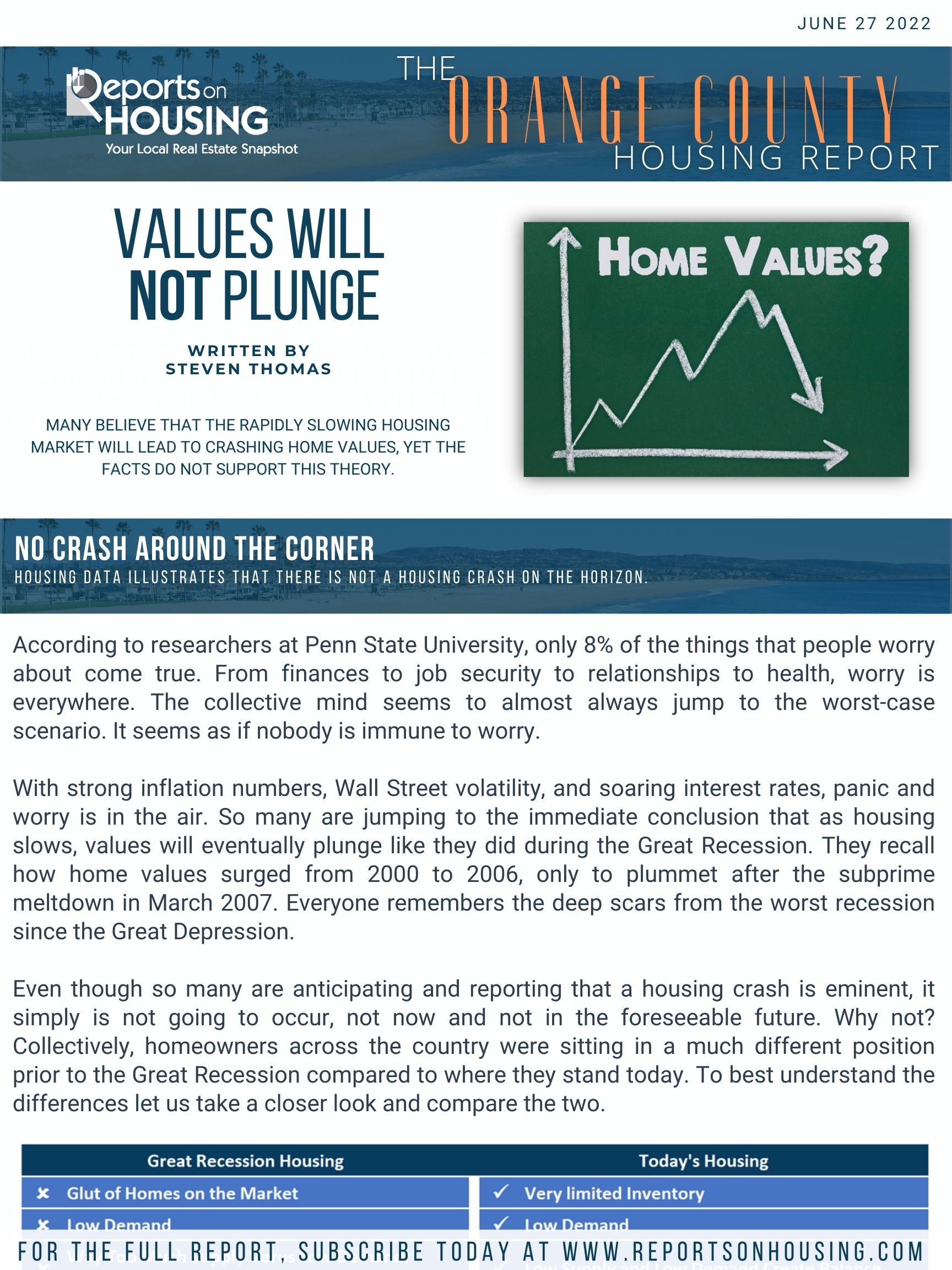MANY BELIEVE THAT THE RAPIDLY SLOWING HOUSING MARKET WILL LEAD TO CRASHING HOME VALUES, YET THE FACTS DO NOT SUPPORT THIS THEORY.
Even though so many are anticipating and reporting that a housing crash is eminent, it simply is not going to occur, not now and not in the foreseeable future. Why not? Collectively, homeowners across the country were sitting in a much different position prior to the Great Recession compared to where they stand today. To best understand the differences let us take a closer look and compare the two.
First, the direction of housing has everything to do with supply and demand. Prior to the Great Recession, the inventory climbed to over five times where it stands today. There was a glut of homes on the market. Like today, demand was muted, but was due to the deterioration of lending standards. When low demand was pit against a glut of available homes, the market lined up heavily in favor of buyers and prices sank. Back then there were low or no down payments, fraudulent lending practices, and loose lending standards and programs, allowing anyone to get a loan and purchase a home. The average buyer FICO score was 681. Today, buyers are purchasing with higher down payments, tight qualification and lending standards, and the average FICO score for buyers is 745. Cash-out refinances accumulated for years leading up to the Great Recession. Yet, today, pulling cash out has been plunging as rates have climbed. There is plenty of tappable equity and there are far more homeowners who own their homes free and clear.
In 2007, homeowners were upside down, owing more than their homes were worth. Banks were in control of the housing market as there was a wave of foreclosures and short sales that lasted years because of enduring poor lending standards. Today, the delinquency rate is at its lowest level since tracking, much lower than the average from 2000 to 2005.
It will be impossible to build an inventory that resembled the glut of homes available from 2006 through 2011. Today’s 3,491 home level is 80% less than the height reached in 2007 of nearly 18,000 homes. The inventory right now in Orange County is 47% less than the 3-year average of 6,633 between 2017 and 2019, when things were normal prior to COVID. And, back then, home values were methodically climbing each year.
Yes, supply is rising. Demand is muted. The housing market is slowing. The number of offers received is dropping. The number of offers over the asking price is falling. Sales are down. The number of price reductions has been steadily climbing. The pace of housing, the Expected Market Time (the amount of time between hammering in the FOR-SALE sign to opening escrow) has slipped from an Insane Seller’s Market (less than 40 days) in March when it was at 19 days to a Hot Seller’s Market (between 40 and 60 days) today at 56 days. It is about to slip into a Slight Seller’s Market (from 60 to 90 days). Later this year it will decelerate to a Balanced Market (between 90 and 120 days), a market that does not favor buyers or sellers. And, if mortgage rates remain elevated above 5.5% with duration, it will most likely become a Slight Buyer’s Market (between 120 and 150 days) by year’s end. Yet, in 2007, the Expected Market Time surpassed 400 days in Orange County, a Deep Buyer’s Market (over 150 days), when home values sank.
Even if housing were to slip into a Slight Buyer’s Market, it would have to be at those levels for months before prices start to decline. And any declines would be small. There is a real stickiness to home values. Very few sellers really “have to” sell. Homeowners are in a very strong position with plenty of equity, low mortgage rates, high credit scores, good jobs, and money in the bank. There will be no reason to panic. Values will not plunge.


